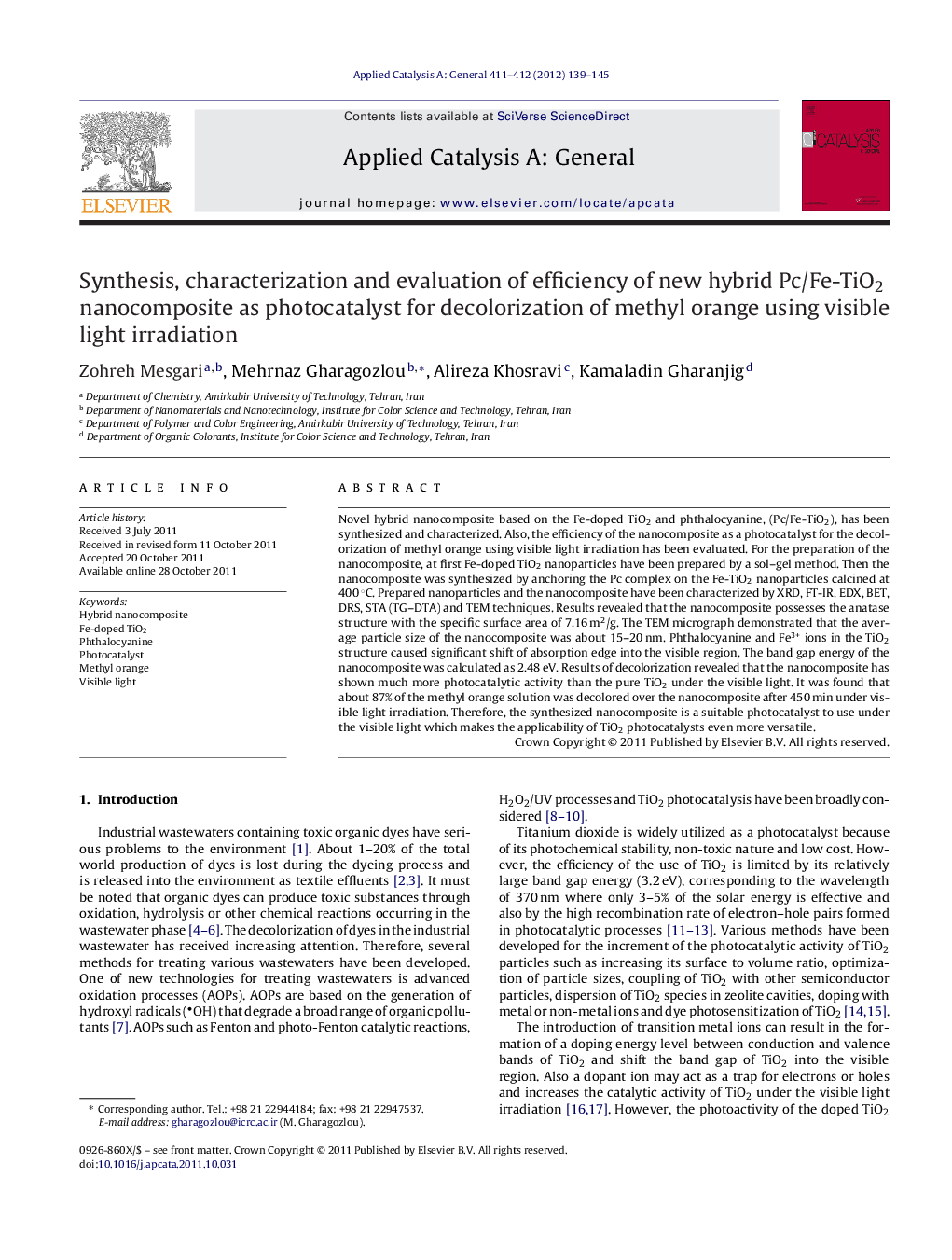| Article ID | Journal | Published Year | Pages | File Type |
|---|---|---|---|---|
| 41279 | Applied Catalysis A: General | 2012 | 7 Pages |
Novel hybrid nanocomposite based on the Fe-doped TiO2 and phthalocyanine, (Pc/Fe-TiO2), has been synthesized and characterized. Also, the efficiency of the nanocomposite as a photocatalyst for the decolorization of methyl orange using visible light irradiation has been evaluated. For the preparation of the nanocomposite, at first Fe-doped TiO2 nanoparticles have been prepared by a sol–gel method. Then the nanocomposite was synthesized by anchoring the Pc complex on the Fe-TiO2 nanoparticles calcined at 400 °C. Prepared nanoparticles and the nanocomposite have been characterized by XRD, FT-IR, EDX, BET, DRS, STA (TG–DTA) and TEM techniques. Results revealed that the nanocomposite possesses the anatase structure with the specific surface area of 7.16 m2/g. The TEM micrograph demonstrated that the average particle size of the nanocomposite was about 15–20 nm. Phthalocyanine and Fe3+ ions in the TiO2 structure caused significant shift of absorption edge into the visible region. The band gap energy of the nanocomposite was calculated as 2.48 eV. Results of decolorization revealed that the nanocomposite has shown much more photocatalytic activity than the pure TiO2 under the visible light. It was found that about 87% of the methyl orange solution was decolored over the nanocomposite after 450 min under visible light irradiation. Therefore, the synthesized nanocomposite is a suitable photocatalyst to use under the visible light which makes the applicability of TiO2 photocatalysts even more versatile.
Graphical abstractFigure optionsDownload full-size imageDownload high-quality image (86 K)Download as PowerPoint slideHighlights► Synthesis of novel nanocomposite of Fe-doped TiO2 and phthalocyanine. ► We report the photocatalytic efficiency of nanocomposite for the first time. ► Nanocomposite showed more photocatalytic activity than TiO2 under visible light. ► Nanocomposite as a visible light photocatalyst expands applicability of TiO2. ► Pc and Fe3+ ions caused a significant shift of absorption edge into visible area.
